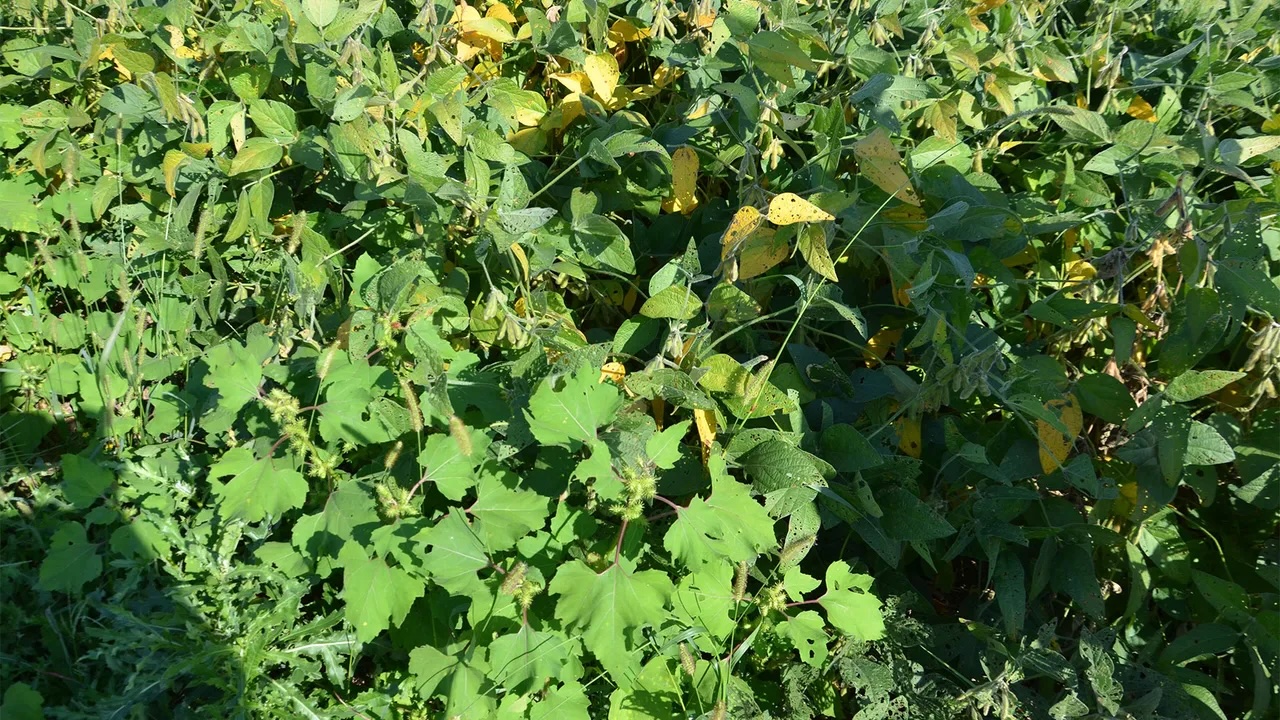Tips to reduce soybean loss at harvest

We leave too many beans behind due to shattering. My son wants to start at 14% moisture and dry with air. Is that a sound strategy? Are there other ways to avoid harvesting soybeans too dry?
The Indiana certified crop adviser panel answering this question includes Betsy Bower, agronomist for Ceres Solutions, Terre Haute; Abby Horlacher, Nickel Plate Consulting, Frankfort; and Brian Mitchem, proprietary products manager for Nutrien Ag Solutions, Fort Wayne.
Bower: Soybeans are mature when 95% of pods are at mature pod color. Even though stems may still have some green, pods could be tan and soybeans harvestable. We saw this last year after a dry August yielded to nice rainfall at the end of the month. Pods were tan, soybeans in the pod were dry, but rainfall still moved some moisture and nutrients into the plant. This situation called for a paraquat application to help dry down stems, which is not normal. However, some farmers use this practice to start harvest early.
There is no way to harvest all soybeans at 13% moisture, but you could start potentially at 14%. You likely will need to reduce harvest speed and adjust combine settings to optimize beans getting into the tank and not going out the rear of the machine.
Starting harvest as soon as you can in the morning and stopping as they get too dry in the afternoon could be a good option. However, we only have so many good harvest days for soybeans.
Consult your combine manual for ideal settings. Slowing down can help, especially as dew comes on in the evening. I have seen yield maps where dew of an evening hit, and yield dropped 10 bushels per acre or more. Settings and speed needed to be adjusted. Soybeans were coming out the back of the combine.
Work on what you can control, including combine settings, speed and when you harvest.
Horlacher: Just like in corn, it is best to start harvesting a little earlier than the ideal moisture. This helps reduces shatter as well as keeps fields harvested later from drying down too much. If you are still seeing quite a few splits while harvesting, it could be that your head is not set up properly. Head manufacturers suggest raising rotor speed till you start to see splits in the grain tank. Once you see the first splits, decrease rotor speed by 10 rpm to help reduce number of splits.
Mitchem: Outside of adjusting harvest machines, there are a few things we can do agronomically to keep plants healthy longer. Those include optimizing plant nutrition and using fungicides. Consider increasing the maturity spread of your soybeans by adding some more full-season genetics. The most important aspect is to check with your seed supplier on shatter resistance scores on varieties you are planting.
Harvesting soybeans at higher moisture levels and air drying will decrease shatter and increase yields due to reduced harvest loss. Phantom yield loss in beans has been shown to exist just as it does in corn. Each time a bean seed gets wet from rain and then dries, we see some loss of weight in the seed. The process of wetting and drying mature seed is called puffing.













